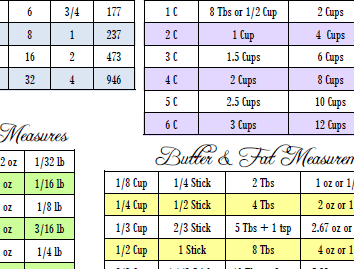If you’re into real ingredients, you probably spend a lot of time cooking and have accumulated your own set of kitchen tips. When we started working through the healing process for Matt’s autoimmune disease (ulcerative colitis), we had to make everything from scratch to avoid the ickies like preservatives, GMOs, vegetable oils, trans fats, artificial flavors and colors, etc. A bonus feature of cooking at home is that you get to enhance the nutrient content of the foods you’re making by using more nourishing ingredients. For example, if you’re making rice or gravy or bread, use homemade broth instead of water. Use mineral-rich real sea salt instead of white salt to boost trace mineral intake. Use unrefined sugars and less of them for homemade desserts that have an extra healthy boost. You get the idea…
Scratch-cooking takes time! Yet for his health, and mine, and our family’s, it’s worth it. But as an engineer, I am always thinking about ways to speed things up and save myself time. If you’ve never read the book “Cheaper By The Dozen,” we highly recommend it for a fun family read. It gives a glimpse into the mind of an engineer-type—we’re always microanalyzing our movements to eliminate “unnecessary motion.” Looking up the same information over and over again would definitely qualify as unnecessary motion! I have compiled a handful of simple but effective kitchen tips to help you save time cooking that nourishing, real food, so you can spend more time enjoying your good health.
Kitchen Tips to Help You Save Time
Here are just a couple of simple kitchen tips that you can implement in the kitchen today, most of them completely free!
Have a handful of favorite recipes?
I have a handful of recipes that I find myself using at least a couple of times a month. I’m an index-user in the cookbook, and looking up the same recipe over and over again wastes time. Write the page numbers of your favorites in the front cover of your cookbook! Or you could flag the pages with page protectors. Easy!
Always having to look up weight/volume conversions?
I don’t know about you, but I find it extremely inconvenient that a half cup of butter is the same as a quarter stick of butter. Or is it the other way around? Stop second-guessing yourself on conversions and stop wasting time looking the same information up on your phone over and over again! Instead, print yourself off a handy kitchen conversion chart and tape it inside the cabinet door above your favorite workspace! It’s not a bad idea to leave room for your own added notes. I have written on mine things like how much a cup of flour weighs, and what amount of salt to use when making a salt brine for fermented foods. I don’t have to stop to look those things up with my sticky fingers in the middle of my kitchen frenzies!
I have created just such a chart for you. With love from your favorite farmers! 🙂
Click here to download this free printable Kitchen Conversion Chart!
Forget to zero the scale?
On that same kitchen “cheat sheet,” write down the weights of your common mixing dishes. That way if you’re in the middle of creating something delicious and realize that it’s too late to weigh the dish, if you have the weight already recorded someplace, just do a little math to adjust your measurements! A calculator in the kitchen can be a help, too!
Want to reduce dishes when measuring?
Grab yourself a simple digital kitchen scale! You can usually find them for $10-$15. Even if you don’t do much baking, weighing ingredients is so much simpler and reduces the number of dishes to wash, especially if you’re using things like home-rendered lard. It’s one of my most-used kitchen tools!
I hope these tips save you some time and make your real-food-cooking more efficient. Thanks for supporting real food farmers like us!
What are your kitchen tips?


